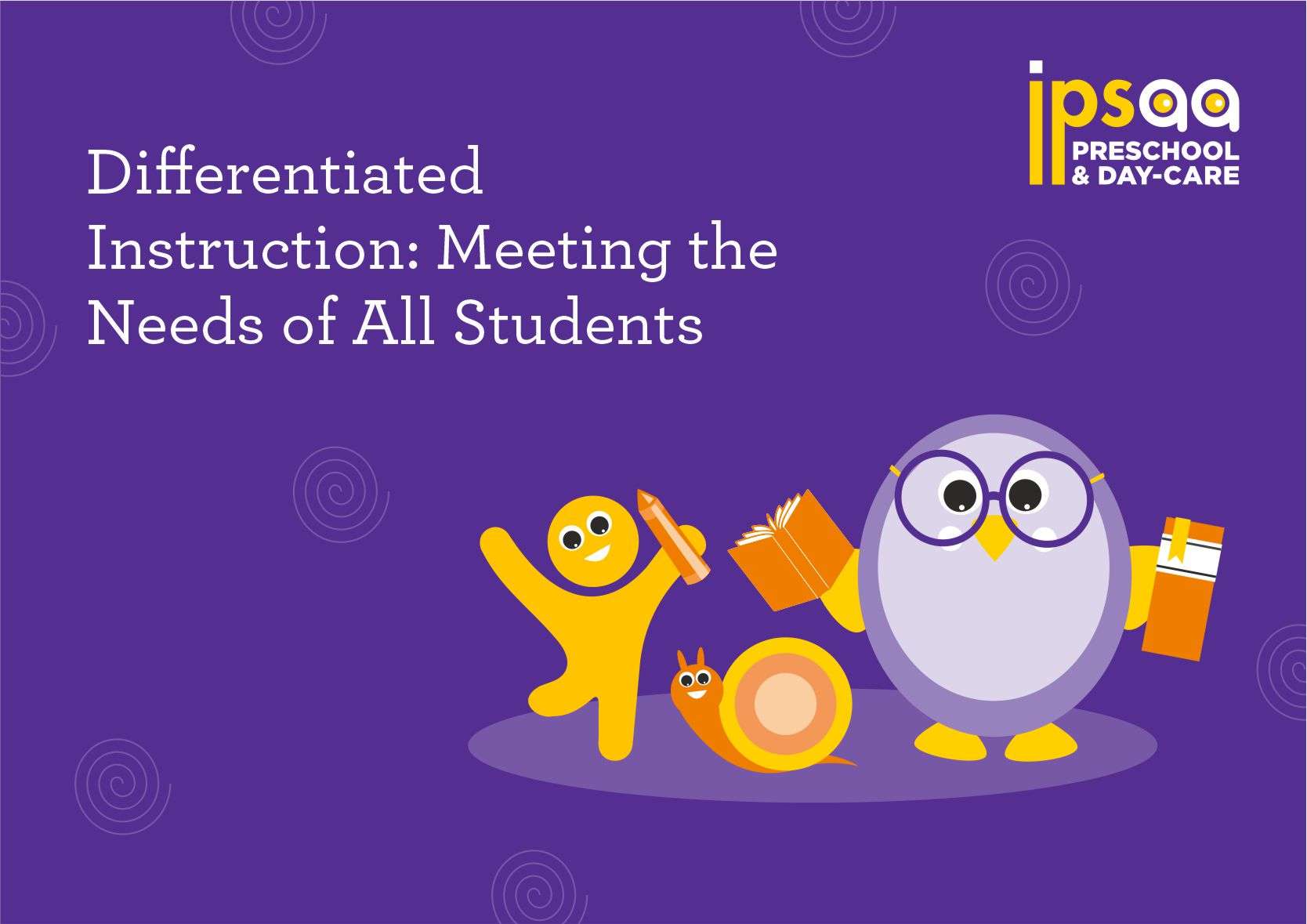In today’s diverse classrooms, teachers are tasked with meeting the individual needs of all students, including those with varying abilities, learning styles, and backgrounds. One approach that has gained popularity is differentiated instruction, a teaching philosophy that tailors instruction to meet the unique needs of each student. In this blog, we’ll explore what differentiated instruction is, why it’s important, and how it can be implemented effectively in schools.
What is Differentiated Instruction?
Differentiated instruction is a teaching approach that recognizes the unique learning needs, interests, and abilities of each student and adjusts the content, process, and product of instruction accordingly. The goal of differentiated instruction is to ensure that all students are challenged and supported to reach their full potential. This approach recognizes that not all students learn in the same way or at the same pace and that effective teaching must be responsive to these differences.
Why is Differentiated Instruction Important?
Differentiated instruction is important because it recognizes that all students have unique needs and learning styles that must be taken into consideration in order to ensure academic success. By tailoring instruction to meet the needs of each student, differentiated instruction creates a learning environment that is engaging, challenging, and inclusive. This approach also helps to build a student’s confidence and self-esteem, as students are provided with opportunities to demonstrate their strengths and pursue their interests.
Additionally, differentiated instruction has been shown to improve student achievement. A study conducted by the National Center on Education Statistics found that students in classrooms with differentiated instruction scored significantly higher on standardised tests than students in classrooms without differentiated instruction. Furthermore, differentiated instruction has been linked to improved student attendance, fewer discipline problems, and greater student engagement.
How Can Differentiated Instruction be Implemented Effectively?
Effective implementation of differentiated instruction requires a shift in mindset from traditional teaching approaches. Rather than viewing students as passive recipients of knowledge, teachers must view them as active learners who bring unique experiences and abilities to the classroom. Below are some strategies that can be used to implement differentiated instruction effectively:
- Know Your Students: Teachers must get to know their students and understand their individual needs, strengths, and challenges. This can be achieved through pre-assessments, student conferences, and ongoing observation and reflection.
- Provide Multiple Means of Representation: Teachers should present content in multiple ways to ensure that all students can access it. This might include using visual aids, hands-on activities, or audio recordings.
- Offer Multiple Means of Expression: Teachers should provide students with multiple ways to demonstrate their understanding of content. This might include allowing students to write essays, create videos, or present to the class.
- Adjust the Level of Challenge: Teachers should adjust the level of challenge for each student to ensure that they are appropriately challenged and supported. This might include providing additional resources or scaffolding for struggling students, or providing enrichment opportunities for advanced students.
- Foster Collaboration: Teachers should create opportunities for students to work collaboratively and learn from each other. This might include group projects, peer tutoring, or class discussions.
- Use Technology: Technology can be a powerful tool for differentiated instruction. Teachers can use educational apps, digital simulations, and online resources to provide students with opportunities for personalized learning.
- Build Flexibility into Lessons: Differentiated instruction requires flexibility in lesson planning. Teachers should build in options for students to choose from, such as different reading levels or alternative assignments, to accommodate for different learning styles and abilities.
- Use Formative Assessment: Formative assessment can be a valuable tool for differentiating instruction. Teachers can use ongoing assessment data to adjust instruction and provide targeted feedback to students.
- Provide Choice: Offering students choices can be an effective way to differentiate instruction. For example, teachers might offer a choice of reading materials or allow students to choose how they will demonstrate their understanding of a concept.
- Communicate with Parents: Communication with parents is essential for effective differentiated instruction. Teachers should keep parents informed about their child’s progress and work collaboratively with them to ensure that their child’s needs are being met.
There are also some common misconceptions about differentiated instruction that can hinder its effective implementation. Here are a few of those misconceptions and how to address them:
- Differentiated instruction means that every student gets a completely different lesson. While differentiated instruction does involve adjusting instruction to meet the needs of individual students, it doesn’t necessarily mean that every student receives a completely different lesson. Teachers can still use whole-group instruction and small-group work, but they need to be intentional about providing different ways for students to engage with the material.
- Differentiated instruction is too time-consuming. While differentiated instruction does require some upfront planning, it can actually save time in the long run. When students are engaged and motivated, they are less likely to become distracted or disengaged, which can lead to discipline problems and wasted time.
- Differentiated instruction is only for students who are struggling. Differentiated instruction benefits all students, not just those who are struggling. By providing opportunities for students to work at their own pace and pursue their interests, teachers can create a learning environment that is engaging and challenging for all students.
- Differentiated instruction means lowering the bar for some students. Differentiated instruction is not about lowering expectations. Rather, it is about providing appropriate support and scaffolding to help all students reach their full potential. Teachers can still set high expectations for all students while providing individualised support.
Differentiated instruction is not a one-size-fits-all approach, and it requires ongoing reflection and adjustment. However, by committing to the principles of differentiated instruction and being willing to adapt to the changing needs of students, teachers can create a learning environment that meets the needs of all students and supports their academic, social, and emotional growth.


Leave a Reply